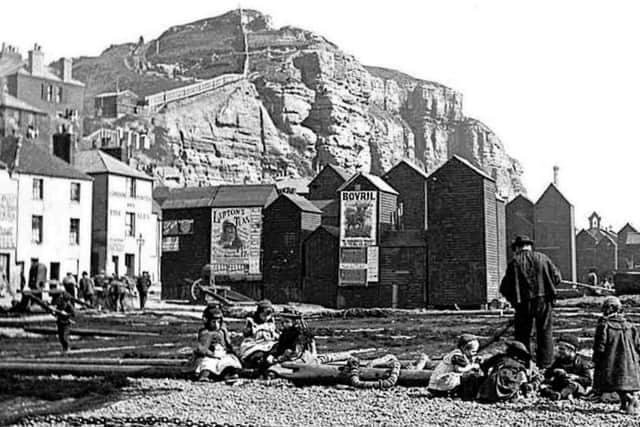The Stade Open Space on Hastings Beach was for drying fishing nets in Victorian times
This article contains affiliate links. We may earn a small commission on items purchased through this article, but that does not affect our editorial judgement.
and live on Freeview channel 276
It was created after large amounts of shingle quickly accumulated against the first groynes that had been built in front of the Old Town in the mid-1830s. In an inspired form of town planning, Hastings Council allowed the fishing boat owners to build 24 carefully laid out rows of net shops between the Cutter Hotel and the site of today’s Fishermen’s Museum in which to store their gear
But a large space was left on either side of what was then called Mercers Bank. This was a large group of buildings which together were a combined industrial and trading centre for the fishing fleet. They ran southward from what is now Winkle Island. Most of Mercers Bank survived until the late 1920s, but then all but two net shops and a small shed (still there today) were demolished.
Advertisement
Hide AdAdvertisement
Hide AdThe beach around Mercers Bank was where fishing boats could be hauled as far away from the sea possible in a severe gale. Until the building of the harbour arm in the late 1890s, the sea could almost come up to net shops.


But what is today the Open Space was also a good place for drying and repairing nets, as seen in this early 1890s photo. Nets and ropes were then made of cotton and hemp, and would rot if they were wet when stored in the net shops. So first of all the gear was dried as much as possible by laying it out in the open. As the picture seems to have been taken in the winter, the nets on the ground would be drift nets used for catching herring. As the fishermen would have been using about ten 50-yard long nets together when herring catching, they needed a large amount of beach or ground to dry them.
When nylon-type materials that did not need drying started being used for making nets and rope following the Second World War, the Open Space became a coach park, although until recently it continued to used for stretching out and mending long trawl nets.
In 1984, the coach park, which was by then also a night-time lorry park, was surfaced with bricks. In 2010 these were dug up and replaced with the current concrete surface, as the construction of the Jerwood Gallery, the Stade Hall and the eat@theStade cafe began.
Advertisement
Hide AdAdvertisement
Hide AdHave you read....: Hastings one of most popular seaside towns for staycations according to Google searches
For the latest breaking news where you live in Sussex, follow us on Twitter @Sussex_Worldand like us on Facebook @SussexWorldUK